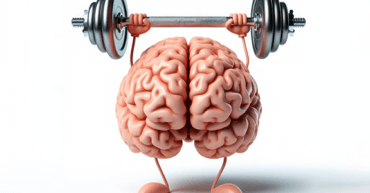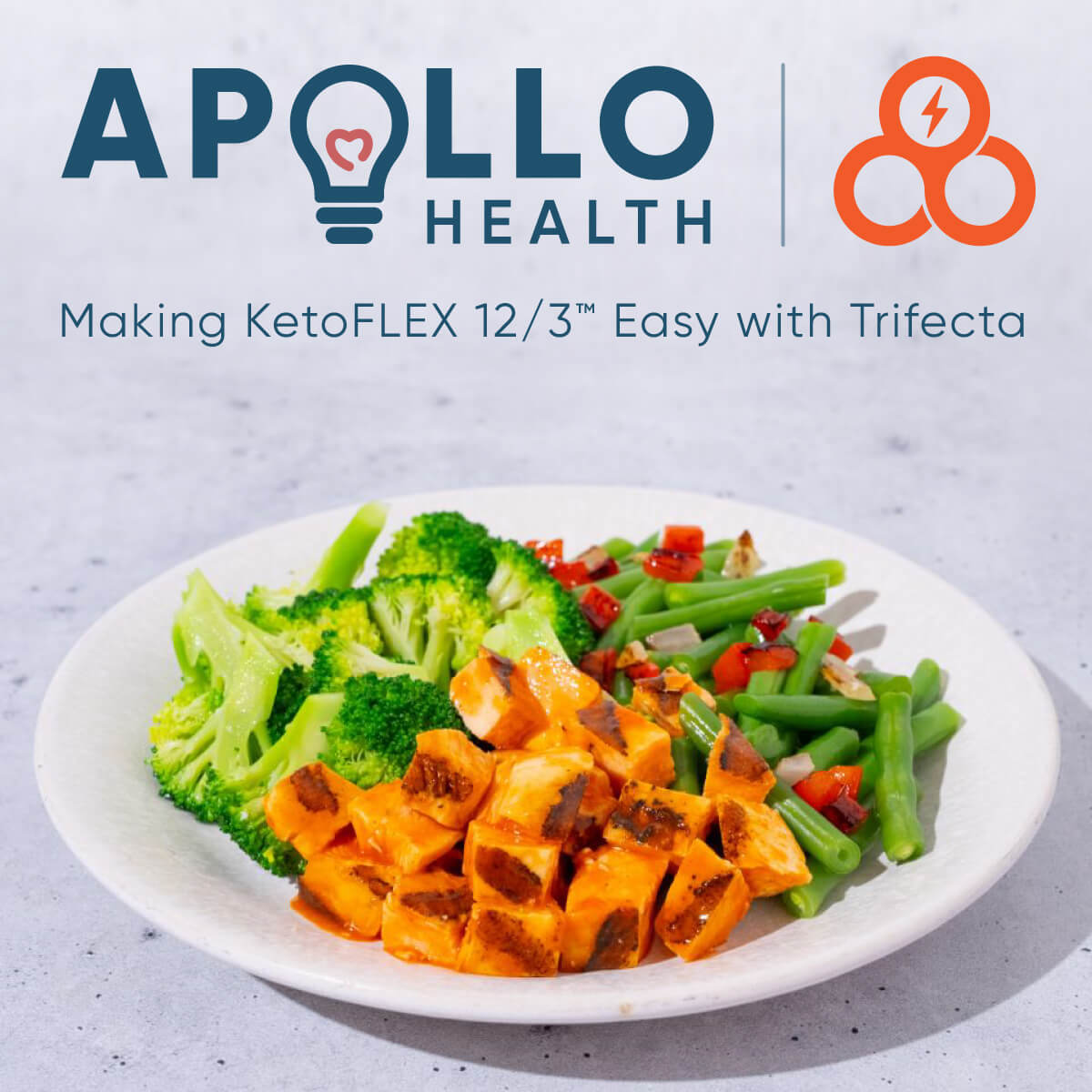September 19, 2024
When to Eat?

By Julie Gregory, Chief Health Liaison for Apollo Health
When to Eat?
We often talk about WHAT to eat for cognitive health, but just as important is WHEN to eat. The short answer is, it depends, and like so many aspects of the Bredesen Protocol, success lies in the details.
We’ve all been conditioned to believe that we should eat three meals a day: breakfast, lunch, and dinner (and that may be appropriate for many), but it’s important to understand the KetoFLEX 12/3 recommendations and how they might apply to your stage of healing.
A Long Daily Fast Promotes Cognitive Health
Fasting is so important to healing that the 12/3 in KetoFLEX 12/3 refers to a recommended minimum 12-hour fast, with at least 3 hours of fasting before bed. Many people extend their fasts even longer. This fasting period (which incorporates the hours you are sleeping) sets the stage for autophagy, a natural process by which your body uses old and damaged cell parts and recycles them for important cellular functions. When you don’t have a long fasting period, it can lead to a build-up of cellular junk parts, which doesn’t allow your cells to function at their best. Autophagy is especially important to brain health as it helps to remove toxic proteins, promote neuronal survival, and regulate inflammation. Additionally, fasting leads to a natural physiological process called ketosis, by which your body uses stored dietary fat as fuel. This can help to fuel your brain when it is struggling to use glucose effectively. (Learn more about Why Ketosis is Important for Brain Health.) Regularly getting into mild ketosis can also heal insulin resistance and create metabolic health by promoting metabolic flexibility, the ability to use either fat or glucose as fuel. Our bodies were designed to be metabolically flexible. In fact, the ability to easily transition from one fuel state to another is a sign of optimal health.
It helps to look at this from an ancestral perspective. We didn’t always eat three meals a day. That’s a recent luxury that began in the late 1700s for those who lived in villages and towns where food was plentiful. Early man would have worked hard to hunt and gather. He very likely went long periods without eating. Despite this, he was able to thrive because of ketosis, our body’s natural built-in protective mechanism that allowed him to burn his own stored body fat when food was scarce. When food was plentiful, after hunting or gathering, he likely would have transitioned to a state of burning glucose.
While the world around us has changed very rapidly, our genes evolve very slowly. ApoE4, the ancestral version of the APOE allele, which is the strongest genetic risk factor for late-onset Alzheimer’s disease, may be exacerbated by the excesses of modern living — too much food combined with a sedentary lifestyle. Dr. Bredesen recommends a longer fast (16+ hours) for those with the ApoE4 allele to help them better align with their ancient genome. He has found that many thrive with this more ancestral pattern of eating. (See ApoE4 Can Be Your Friend for more strategies to protect your cognition and overall health.)
Is Fasting Appropriate for Me?
Maybe, but it’s important to understand that this blanket recommendation may not be appropriate for everyone. It depends upon your current state of health and where you are in your healing journey. If you are healthy, weight-stable, with strong muscles, a long daily fast can be very healthful for both cognitive and overall health. However, there are several groups for whom it may not be immediately appropriate.
- Those with insulin resistance: Folks in this category may experience hypoglycemia, low blood sugar, when adopting a long daily fast. This includes anyone with insulin resistance, pre-diabetes, or diabetes. Those taking diabetes medications need to be especially careful and should work closely with their physicians before trying to fast so they can learn how to reduce or even stop their medication as healing occurs. The key is to extend your fast very slowly while adopting the KetoFLEX 12/3 diet. See How to Transition to a Longer Fast for details.
- Those who are underweight: It’s very important to first attain a healthy, stable weight before adopting a long daily fast. Being underweight puts you at increased risk of sarcopenia (the loss of lean muscle mass) and osteopenia (the loss of bone), both of which accompany aging and are correlated with an INCREASED risk of cognitive decline. Until you can reach an optimal weight, feel free to enjoy the healthful KetoFLEX 12/3 foods, but be sure to eat three meals per day. See Strategies for Gaining and Maintaining Weight.
So, How Often Should I Be Eating?
Once you’ve comfortably incorporated a long daily fast, many people settle on two meals per day, while others still need three meals per day to maintain a healthy weight. We discourage snacking on the protocol to help keep insulin low. Insulin is needed to allow glucose into the cells, but when insulin is constantly activated by frequent eating, your cells can become resistant to it, leading to insulin resistance.
When Should I Be Eating?
Once again, this is individualized and depends upon your unique circadian rhythms and schedule. Ideally, your largest meal will be when the sun is at its peak. For those who eat three meals per day, you may enjoy a small breakfast and dinner with a larger lunch. Whereas those who eat two meals per day either skip breakfast and enjoy a larger lunch and smaller dinner or enjoy a small breakfast and larger lunch and skip dinner altogether. You are welcome to follow whichever schedule works for you and allows you to reach your fasting goals.
One thing to consider, however, is your body’s need for increased protein following a workout, especially a strength training workout. Research shows that getting ~30 grams of protein within an hour or two of exercise is ideal for maintaining muscle strength. See Brains and Brawn for Brain Health to learn more.
What About One Meal Per Day?
Eating one meal a day (OMAD) may be fine occasionally, especially if it allows you to reach a longer period of autophagy. Our ancestors thrived on variability, so it may likewise be helpful for us to switch up our eating patterns occasionally. OMAD eating may be particularly helpful if you’ve put on a few pounds and want to lose weight.
There are considerations, however, with this pattern of eating. Our bodies are unable to absorb more than 30 grams of protein in one meal. If you eat more, it cannot be stored for later use and will be converted into glucose, which can impede your ability to achieve ketosis. When your body doesn’t get an adequate amount of protein, it will break down your muscles, weakening them to get what it needs. For that reason, it’s especially important to spread out your protein intake throughout the day.
What About an Extended Fast?
Extended fasting may be helpful for some, but for most, the long daily fast that we recommend is sufficient for optimal cognition and overall health. If you are underweight (or borderline underweight), a long daily fast will further reduce your energetics, which can actually contribute to cognitive decline. Those who have some weight to lose, however, may be candidates for an extended multi-day fast. This should be undertaken with the oversight and permission of your doctor. Dr. Valter Longo has created a five-day Fasting Mimicking Diet (FMD) that may be a safer way of applying this strategy. It’s especially important for anyone undertaking a longer fast to stay hydrated and to ensure adequate electrolytes.





